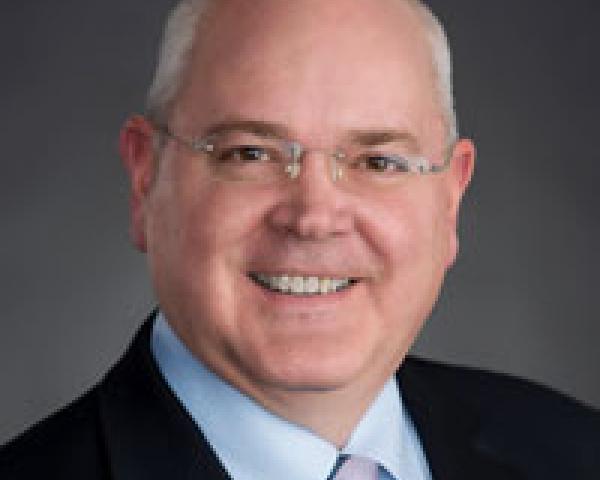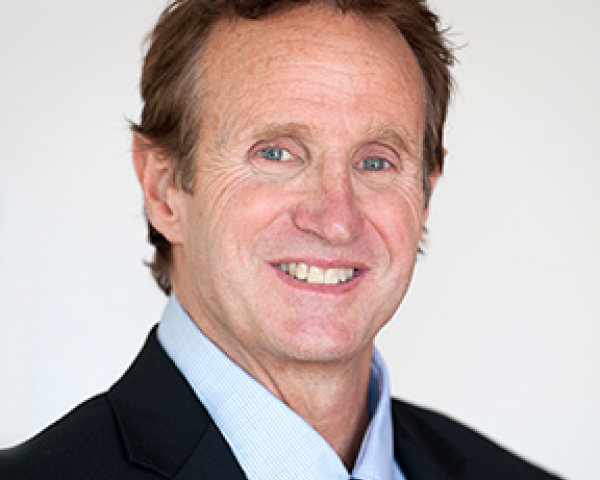This article is about opening minds, eyes, hearts and futures. I'm going to take you on a journey into a world where I shine my flashlight into dark corners, challenging norms, introducing ideas and connecting different areas of current players and practice.
Thanks in advance for sharing, caring and daring to think in ways that transform.
- Steve
***********************************************************************
Imagine if we could just wave a magic wand and all enjoy mutually delicious sips from the same icy cocktail of healthcare reform. The solutions appear to be so clear and obvious — to everyone except the major players that engage in healthcare.
Why would health systems, medical facilities and specialists willingly leave the B2B payer system and depend on consumer payments? Why would hospitals, big pharma and providers want to compete on price when they can use their political influence and retain greater certainty in a regulated pricing model?
If large self-insured companies contract with health systems directly, could we count on these companies to pass savings directly to their employees, rather than pocket them as profit? Moreover, what would be the fallout on payer pricing to the individual and the fully insured markets? If payer competition was lessened through direct contacting, could health systems ultimately wield pricing leverage in these relationships?
Check out the latest reports on
wellness plans and seniors' use of
digital health tools. Why would patients who feel good or are not remunerated financially want to make these consistent, long-term behavior changes?
In a country with a proven history of high obesity and chronic disease rates, why would patients choose to change their lifestyles
en masse? What is the motivation for long-term adherence and results?
Okay, then, how do we disassemble a massively interconnected, for-profit health model that is complete with individual and institutional shareholders and bondholders? What about the leftover millions of employees from payers, brokers and insurance agents who are not able to be repurposed into other jobs?
What happens to the rest of the economy when consumer spending from all this unemployment and loss of investment money drops our GDP into the toilet? How would this affect future tax rates for individuals and companies?
We need payers, drug companies, providers and hospitals to lower healthcare costs. But, if they do lower costs, what then?
Instead of being motivated by satisfying shareholders and taking in more profit, will these companies choose to willingly pass on new savings as a result of lower pricing to healthcare consumers? If that's the case, why haven't we seen any major industry players going on record to say this?
Enter Will McAvoy from the HBO show “The Newsroom.” The fake TV anchor from ACN said it best with his famous utterance: “The first step in solving any problem is realizing there is one.”
See also: Consumer-Friendly Healthcare Model
Increased healthcare costs, lower quality, worsening outcomes, fraud, waste, abuse, mass unaffordability, stagnant wages, overutilization, defensive medicine, uber-administration and physician burnout are all too obvious, painful and expensive realities. Yet these are largely the emerging effects of a largely missed core problem:
The chief reason for our healthcare crisis has been political leaders' lacking the guts to make the tough decisions for our future.
If our current weak, spineless, clueless, ego-driven, special interest capitulating, partisan robots led America during WWII, I fear we'd today be speaking Japanese or German. But the leaders in the 1940s recognized and decisively drew upon the need for all Americans to pull together for the greater good. Our citizens and businesses believed in the vision and greatness of perpetuating a better America for the next generation.
As much as I never thought I'd say it, we actually need greater government oversight in several key areas. It is obvious that large healthcare industries and public players are not simply going to go away or let their built-up leverage shrivel up. Consumers and employers need to stand on more equal footing, which cannot be accomplished solely by the Triple Aim (simultaneously improving the experience of care, bettering the health of the population and reducing per-capita costs).
When I think of great decisions that shaped our country, I think of John F. Kennedy's decision to land a man on the moon. I think of Lyndon B. Johnson getting the Civil Rights Act passed. I think of Abraham Lincoln's Emancipation Proclamation. I think of Congress passing the 19th Amendment. I think of Franklin Delano Roosevelt's New Deal with 100 days of full bipartisan support. And I think of the way America rallied together, had conservation drives and raised war bonds during WWII.
We need those same leadership qualities to better position and deliver affordable, quality healthcare for the next generation. Consumer initiatives and bold plans are good — until special interests hit politicians.
Apart from aspirations of greater political leadership, we need to have a viable model for bringing fairness, accountability and affordability to the current status quo of health care.
ENTER: THE ‘HIT-IQ’ PLAN
HIT-IQ = Health reform by
Intelligent augmentation,
Transparency,
Incentive and
Quantity.
HEALTH REFORM:
To speed up the ability for all players in the U.S. health system to benefit from reform, the HIT-IQ plan fills the cracks in healthcare reform. It is composed of the following:
INTELLIGENT AUGMENTATION (IA): Also known as
intelligence amplification. Think of IA as a computer system or technology that supports and enhances human thinking, analysis, planning and decisions. Yet it allows the control and oversight to remain with humans. An example is Google's search algorithm that allows us to find what we want online, in just a matter of seconds.
Contrast this with artificial intelligence (AI), where machines are meant to fully reproduce human cognition within a system that functions and learns autonomously in its own domain. True human-free AI is not fully here yet, though portions of AI are coming forward in new technology and solutions.
We now live in a world where much of our data has moved from paper to digital. Big data offers great benefit, yet it still has to be organized, analyzed, prioritized and optimized for a specific purpose. IA is the generator, and when coupled with massive computing power and speed, it allows humans to become far more accurate and efficient in their business and life activities.
See also: The Search For True Healthcare Transparency
In
a previous article on AI, I wrote about different companies, each with emerging technologies meant to improve accuracy and efficiency in different facets of healthcare. This includes medical imaging, mental health, risk management, drug discovery, genomics, hospital monitoring and lifestyle management. IBM's Watson is a great example of IA in healthcare, where doctors can better diagnose and employ the latest personalized evidence-based care.
Help in efficiency can come none too soon. Recent reports show the last three quarters of U.S. worker productivity are at the lowest levels since the pre-stagflation period in the 1970s. According to popular economists, something very interesting is happening. The last six years of great technology has not helped overall productivity — in fact, it has gone backward in a hurry.
This becomes extremely important for healthcare, which, at the end of 2016, will have the highest employment pool of any U.S. sector. Moreover, the pricing of healthcare and health coverage has become unsustainable for many individuals and small to mid-size employers.
A big game of “financial musical chairs” now exists between employer profits, consumers who want to afford healthcare and retain their current standard of living and health companies that want to satisfy shareholders with ever-surging profits.
The big fear of robotic automation and AI is that computers will replace human workers. But I believe IA efficiency makes job elimination
en masse an absolute necessity in bringing down the cost of healthcare. Any company's purpose is to make profit, attain customers and stay competitive — and that does not include keeping people employed. That is, unless the replaced quality, accuracy and value becomes less than when current high levels of human capital were involved.
With what I continue to see coming in IA solutions, I believe it will not be long until we see deep learning and pattern recognition being applied to hiring, work flows, management and core operations — as well as patient intake, diagnosis, m-health data, patient marketing, population health and chronic and acute remote and in-house care management.
The fact that interest rates remain low also bodes well for healthcare companies to make investments in greater levels of integrated technologies that will replace bunches of humans with greater accuracy, efficiency, fewer errors and greater predictability. Let's not forget this technology operates 24/7/365 with fewer salaries, benefits, sick days, arguments — or the ability to file lawsuits.
But wait...there's more!
Look for malpractice rates and defensive medicine practices to come down significantly, as expertly designed, optimized, scalable and proven algorithms come into play. As medical malpractice rates drop, health systems and providers will capture that cost difference — and not add them over current net salaries.
Et voila! Still lower costs!
It's not magic, folks; we're trading off large inefficiencies and human-based error inherent with a large employment pool. There's a reason medical error is the third-largest killer in America, and big data analysis, predictability, accuracy, greater monitoring and efficiency are precisely what is needed for lower costs, higher quality, greater safety and better outcomes.
Best of all, the system will still be run by humans.
TRANSPARENCY:
This is one area where the government must make a mandate across all states. We have seen that without mandated public and easy-to-access transparency, health consumers and employers have absolutely no chance of greater affordability.
Healthcare companies have no interest in making healthcare more affordable to consumers. And, please, don't be lulled into thinking that just because payers, plans, medical device companies and big pharma/PBMs are working to lower healthcare costs and increase care quality that the savings will be passed on to the consumer in the form of lower, more affordable pricing.
Look at this: United Healthcare's PATH program is a joint effort for better care outcomes. In 2015, 1,900 providers hit their program marks and
were paid a bonus of $148 million, near $78,000 per provider. Sick and diseased consumers are going into bankruptcy and medical debt or are holding holding off seeing doctors because financial constraint — and United is paying doctors bonuses to lower costs that should have never been that high to begin with?
Is this a joke? Providers are being rewarded for doing what is expected anyway, and the consumers (errrr, paying customers) get regularly increased premiums? Take a look at the
PATH consumer website; with all the accolades on improving health, help me find where it says United will reward customers by delivering lower prices for their plan's premium pricing.
Here are needed areas of transparency:
1. An all-claims reporting mandate, from every payer, hospital, facility, doctor, self-insured company and government agency. While the recent
ERISA ruling by the Supreme Court caused some setback, the Department of Labor could — and should — push through self-insured entities to report payments through state-mandated requirements.
2. Every hospital, facility, health system and provider should have their full fees, within 90 days for every product or service, be freely and easily available to the public. Any website or app could tie into the API or data to create patient or employer comparison shopping tools.
3. Every individual and company must be able to see what underwriting factors and specific influences went into a payer deciding upon their fully insured plan premium. Line-by-line calculations, each fully explainable.
4. All pharmacy benefits managers (PBMs) should be required to be fully transparent on all fees, kickbacks and bonuses.
5. There must be increased safety when it comes to providers and facilities. There is no reason that circumstances involving doctors, hospitals or medical facilities that have been found guilty of state law violations or have lost or settled in malpractice suits shouldn't be made clear to consumers.
6. People should be made aware of drug companies' R&D costs. We're all sick and tired of the moaning relating to big pharma's R&D and how our demands for price cuts will kill future new cures and drug development. Okay, then, let's open those books so we can share in your pain. Hey, greater public appreciation and demand for IA in drug delivery will keep profit margins while bringing down prices.
INCENTIVES:
I'd like to meet the geniuses who believe that a healthcare population that is 40% obese, full of chronic disease and is constantly tempted by fast food and sedentary online entertainment is going to make (wait for it) long-term consistent changes by using wellness programs.
Will they do so because doctors (who are compensated by financial incentives or are punished by financial withholding penalties) tell them to do so?
Here's a toughie: What if we asked doctors and practices to lower their cost to provide care, make less in profits and lower their salaries. Then, we told them they would willingly pass on these newfound monies to reduce pricing for patients because it would be financially healthier for the country's future.
How do you think our white coat paladins, hospital administrators and health system executives would respond?
This is not rocket science — it is common sense.
Studies are very clear that loss aversion related to money is a far better motivator, even than giving them money. Moreover, only 25% of employees find their wellness programs at work to be effective.

In a recent study of 7,600 businesses by Payscale, 73% of employers believe they pay fairly, while only 36% of employees feel the same. And just 21% of the workers believe the company is transparent about pay.
Catching my drift, employers? You can kill three birds with one stone: gaining healthier employees, potentially lowering healthcare costs and improving engagement through greater levels of trust and feeling appreciated financially.
Reward healthcare consumers by tying wellness goals to financial rewards or punishments. (We are talking cash here, folks — not trips, massages or points). Health plans? Same thing. If you want to balance out the risk of sicker members, per enrollment with the ACA mandates, hit up your chronic, pre-chronic and younger members. See how financial incentives and disincentives work there.
If they use wearables and contribute data to you or their provider, they are rewarded financially. If they hit goals on medication adherence, weight loss, lowering cholesterol or blood sugar, give them a paid check rebate. If they have a yearly physical, reward them.
Better yet, show them that future check with all applicable bonuses added together for their rewards. It is a nice, juicy number. Now, deduct 2% of that cash every week they don't execute — like a melting ice cube. Keep showing them as often as possible what they are going to be missing. Catching my drift?
QUANTITY:
Care delivery professionals, facilities and systems will soon have outcomes, patient satisfaction and cost numbers pitted against their service reimbursement levels — and, eventually, against each other. Consumerism is growing and, whether healthcare stays largely regulated in its pricing or not, reimbursement levels at all aspects of the care supply and delivery chain (including on many prescription drugs) will likely decrease.
Moreover, reimbursement via bundled, value-based payments will come to replace the old, perverse, fee-for-service model. Hence, lower payments for the same work means the number of people engaging in healthcare products and services must grow if revenues are to grow.
Healthcare businesses will have to optimize every possible aspect of their business for new and repeat customer engagement and to retain their customer base. Especially important here will be those successful companies who focus on their intangible assets. These include advertising, marketing, sales, goodwill, customer relationships and various expertise that hospitals, providers, payers, drug companies and facilities have, which they can, and should, capitalize upon to their economic advantage.
The companies that get this will shape their precise outcomes through mastering the art of optimization. Learning how to maximize their intangible assets to drive more engagement of current and prospective consumer clients, thus increasing quantity of services and products. They will look at every consumer and business relationship, every past and present contact, every opportunity in current consumer interactions, every supply and distribution channel, every employee and every piece of capital or human capital they have.
See also: Is Transparency the Answer in Healthcare?
Many healthcare companies suffer from tunnel — instead of “funnel” — vision. They believe they provide products or care and are paid for such — and that's it. But the organizations that recognize they can not only offer more but be more than their basic business offerings will derive greater revenue and profit.
Population health is a great example. It is about more than capturing data from wearables; it is about recognizing the interplay between chronic disease and genetics and the need for screening those who don't currently engage in healthcare services. It is about tying in mental health for those who are caregivers and don't take care of themselves. It is about recognizing that, if you work out a medical debt with more than a negotiation but perhaps a thank you card sent after, your name will be more gold than mud.
For direct primary care doctors, it is about offering a rebate to customers who bring new members to your practice. For a health system, it might be coordinating a telehealth counseling visit to a family member grieving because of a loved one's illness. What about making that extra call to check up on how a patient is doing at home the day after they get home from the hospital?
Perhaps it's giving a free service. Often, the most self-serving thing a company can do is actually to be selfless. Maybe it is a doctor's office sending flowers after a successful surgery outcome or even upon a loved one dying. Maybe it is a call from a drug company outbound customer coordinator, just to see how the new medication is working.
Health companies of all types and sizes that replace current limiting beliefs with empowering ones will find themselves on a track toward capturing greater community value, engagement and increasing their market identity. In short, companies that get people to want to engage and help others engage with those same companies will thrive.
Players in healthcare must not forget that consumerism is not a dirty word; it is people putting up their hands saying, “I want to be cared for and find value in that care so that I can feel good about my time and money spent.”
If they have to be cared for because of sickness or an emergency, then that is all the more reason to make patients feel good about you.
It is no longer a healthcare world where providing the service, billing and receiving payment suffices. People and employers are smartening up and recognizing that lower reimbursement, more competition and new options for care and coverage are developing.
Those healthcare companies that can integrate the intangibles in a meaningful, ethical and value-added manner for their current and prospective healthcare consumers will thrive. Increasing quantity of consumers and identifying and rendering necessary services is key (especially in a healthcare business environment that has properly integrated lower costs, greater efficiency through technology and better outcomes).
It will make — and keep — current and future healthcare consumers far happier in the long run. Now that's some of the best risk management I know about.



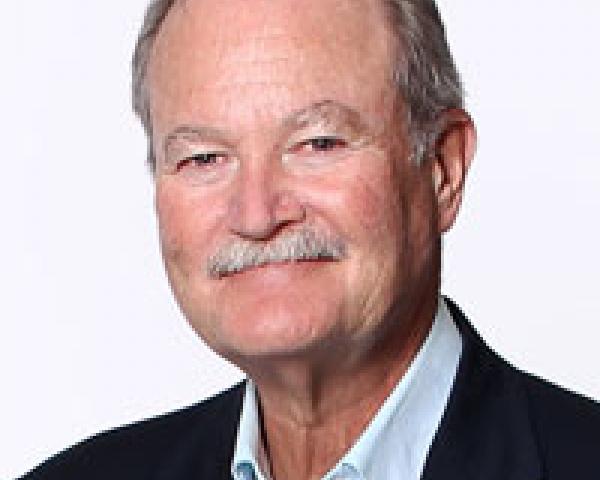

 In a recent study of 7,600 businesses by Payscale, 73% of employers believe they pay fairly, while only 36% of employees feel the same. And just 21% of the workers believe the company is transparent about pay.
Catching my drift, employers? You can kill three birds with one stone: gaining healthier employees, potentially lowering healthcare costs and improving engagement through greater levels of trust and feeling appreciated financially.
Reward healthcare consumers by tying wellness goals to financial rewards or punishments. (We are talking cash here, folks — not trips, massages or points). Health plans? Same thing. If you want to balance out the risk of sicker members, per enrollment with the ACA mandates, hit up your chronic, pre-chronic and younger members. See how financial incentives and disincentives work there.
If they use wearables and contribute data to you or their provider, they are rewarded financially. If they hit goals on medication adherence, weight loss, lowering cholesterol or blood sugar, give them a paid check rebate. If they have a yearly physical, reward them.
Better yet, show them that future check with all applicable bonuses added together for their rewards. It is a nice, juicy number. Now, deduct 2% of that cash every week they don't execute — like a melting ice cube. Keep showing them as often as possible what they are going to be missing. Catching my drift?
QUANTITY: Care delivery professionals, facilities and systems will soon have outcomes, patient satisfaction and cost numbers pitted against their service reimbursement levels — and, eventually, against each other. Consumerism is growing and, whether healthcare stays largely regulated in its pricing or not, reimbursement levels at all aspects of the care supply and delivery chain (including on many prescription drugs) will likely decrease.
Moreover, reimbursement via bundled, value-based payments will come to replace the old, perverse, fee-for-service model. Hence, lower payments for the same work means the number of people engaging in healthcare products and services must grow if revenues are to grow.
Healthcare businesses will have to optimize every possible aspect of their business for new and repeat customer engagement and to retain their customer base. Especially important here will be those successful companies who focus on their intangible assets. These include advertising, marketing, sales, goodwill, customer relationships and various expertise that hospitals, providers, payers, drug companies and facilities have, which they can, and should, capitalize upon to their economic advantage.
The companies that get this will shape their precise outcomes through mastering the art of optimization. Learning how to maximize their intangible assets to drive more engagement of current and prospective consumer clients, thus increasing quantity of services and products. They will look at every consumer and business relationship, every past and present contact, every opportunity in current consumer interactions, every supply and distribution channel, every employee and every piece of capital or human capital they have.
See also:
In a recent study of 7,600 businesses by Payscale, 73% of employers believe they pay fairly, while only 36% of employees feel the same. And just 21% of the workers believe the company is transparent about pay.
Catching my drift, employers? You can kill three birds with one stone: gaining healthier employees, potentially lowering healthcare costs and improving engagement through greater levels of trust and feeling appreciated financially.
Reward healthcare consumers by tying wellness goals to financial rewards or punishments. (We are talking cash here, folks — not trips, massages or points). Health plans? Same thing. If you want to balance out the risk of sicker members, per enrollment with the ACA mandates, hit up your chronic, pre-chronic and younger members. See how financial incentives and disincentives work there.
If they use wearables and contribute data to you or their provider, they are rewarded financially. If they hit goals on medication adherence, weight loss, lowering cholesterol or blood sugar, give them a paid check rebate. If they have a yearly physical, reward them.
Better yet, show them that future check with all applicable bonuses added together for their rewards. It is a nice, juicy number. Now, deduct 2% of that cash every week they don't execute — like a melting ice cube. Keep showing them as often as possible what they are going to be missing. Catching my drift?
QUANTITY: Care delivery professionals, facilities and systems will soon have outcomes, patient satisfaction and cost numbers pitted against their service reimbursement levels — and, eventually, against each other. Consumerism is growing and, whether healthcare stays largely regulated in its pricing or not, reimbursement levels at all aspects of the care supply and delivery chain (including on many prescription drugs) will likely decrease.
Moreover, reimbursement via bundled, value-based payments will come to replace the old, perverse, fee-for-service model. Hence, lower payments for the same work means the number of people engaging in healthcare products and services must grow if revenues are to grow.
Healthcare businesses will have to optimize every possible aspect of their business for new and repeat customer engagement and to retain their customer base. Especially important here will be those successful companies who focus on their intangible assets. These include advertising, marketing, sales, goodwill, customer relationships and various expertise that hospitals, providers, payers, drug companies and facilities have, which they can, and should, capitalize upon to their economic advantage.
The companies that get this will shape their precise outcomes through mastering the art of optimization. Learning how to maximize their intangible assets to drive more engagement of current and prospective consumer clients, thus increasing quantity of services and products. They will look at every consumer and business relationship, every past and present contact, every opportunity in current consumer interactions, every supply and distribution channel, every employee and every piece of capital or human capital they have.
See also: 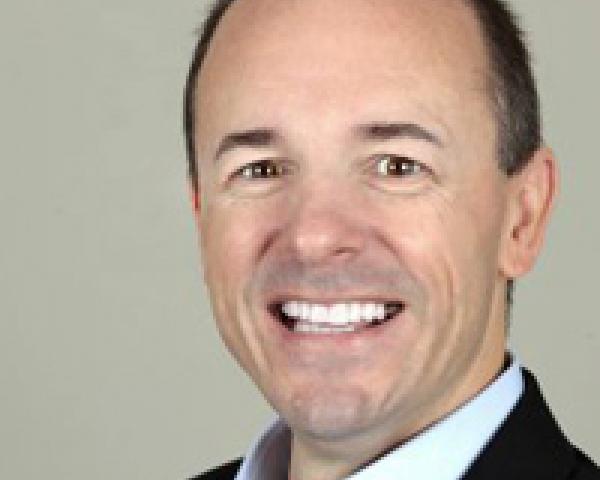









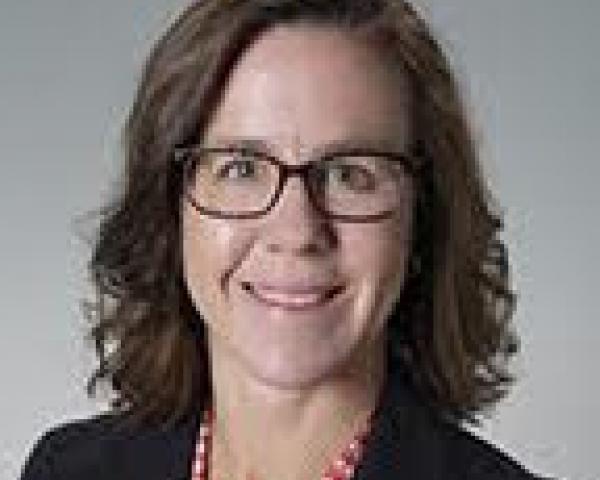




 Insurance is a several-hundred-year-old phenomenon. Without boring you with all those several hundred years of history, suffice to say, it is a massive global industry – many estimate it to be $5 trillion globally! So, the first question is how do you disrupt a multitrillion-dollar industry? The answer can be found in the adage that goes, “How do you eat an elephant?” Answer: “One bite at a time.”
See also:
Insurance is a several-hundred-year-old phenomenon. Without boring you with all those several hundred years of history, suffice to say, it is a massive global industry – many estimate it to be $5 trillion globally! So, the first question is how do you disrupt a multitrillion-dollar industry? The answer can be found in the adage that goes, “How do you eat an elephant?” Answer: “One bite at a time.”
See also: 

